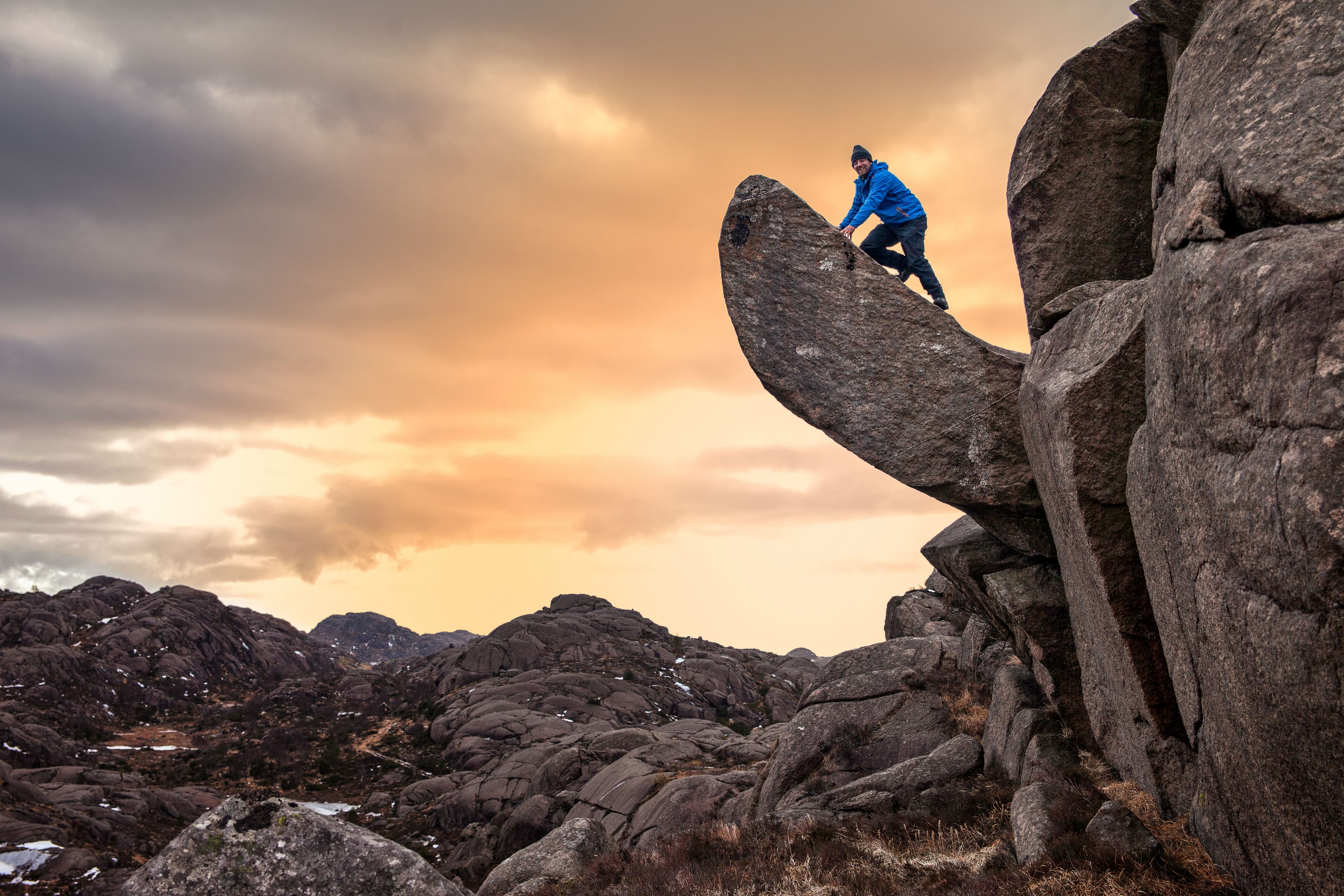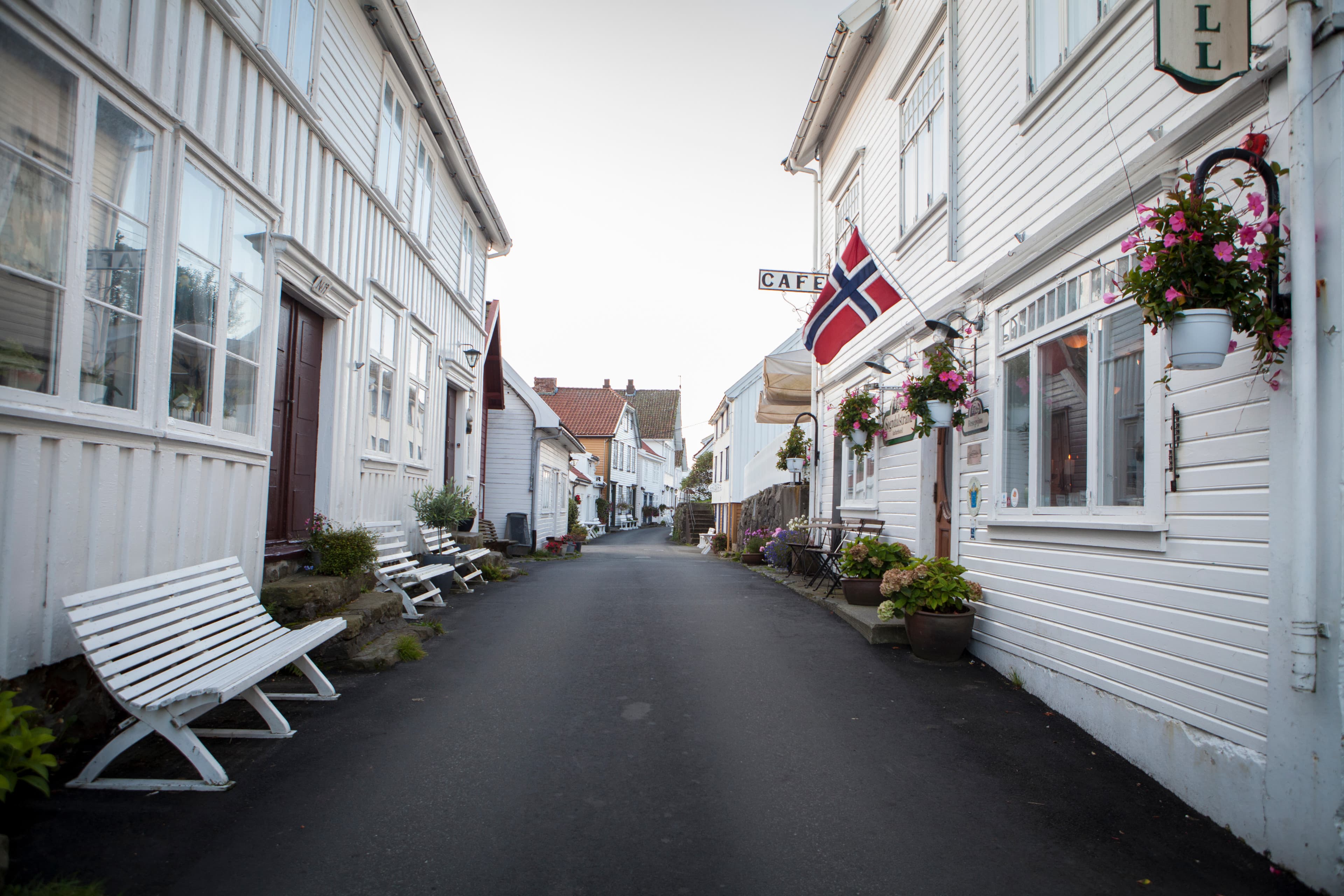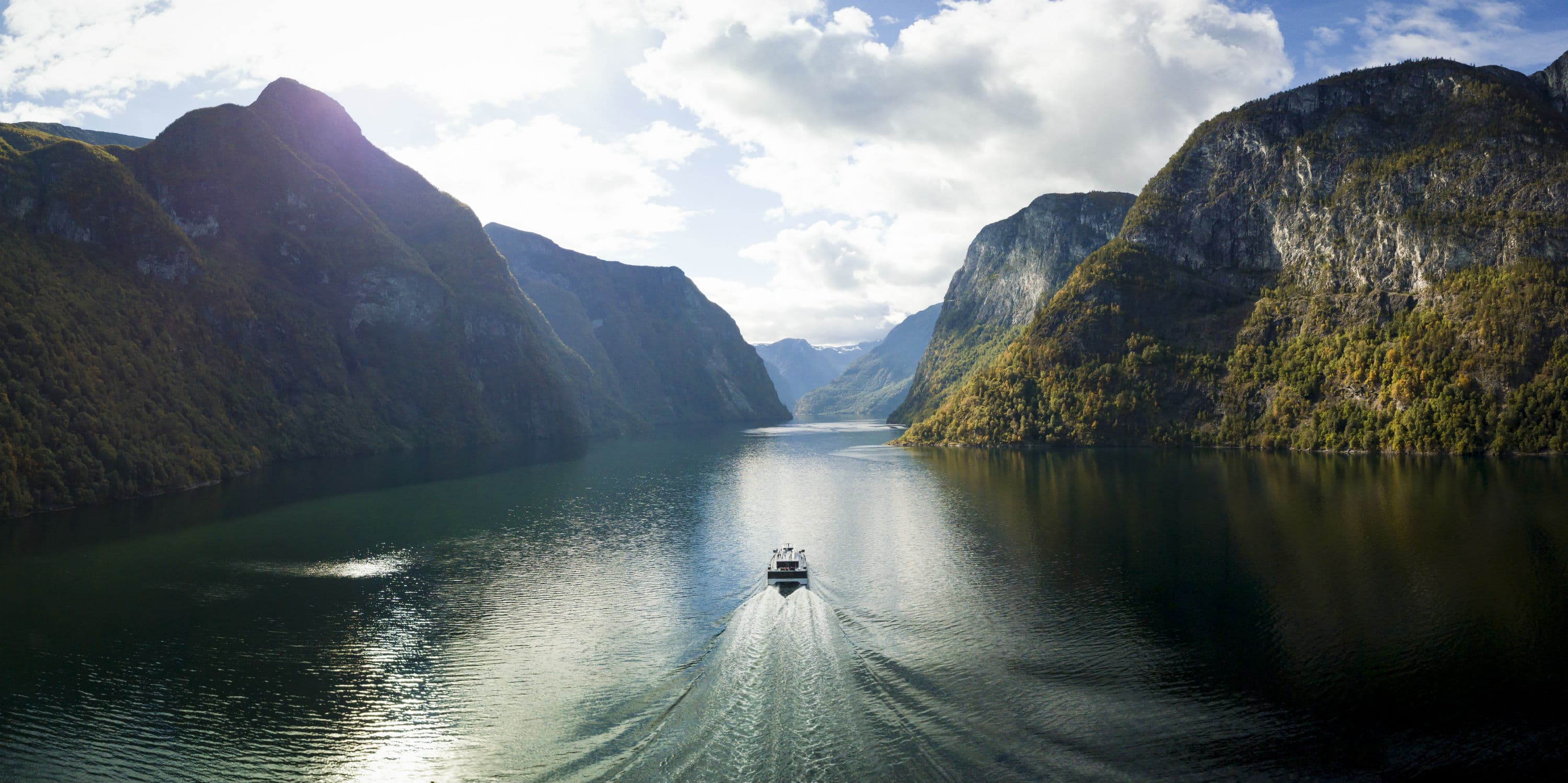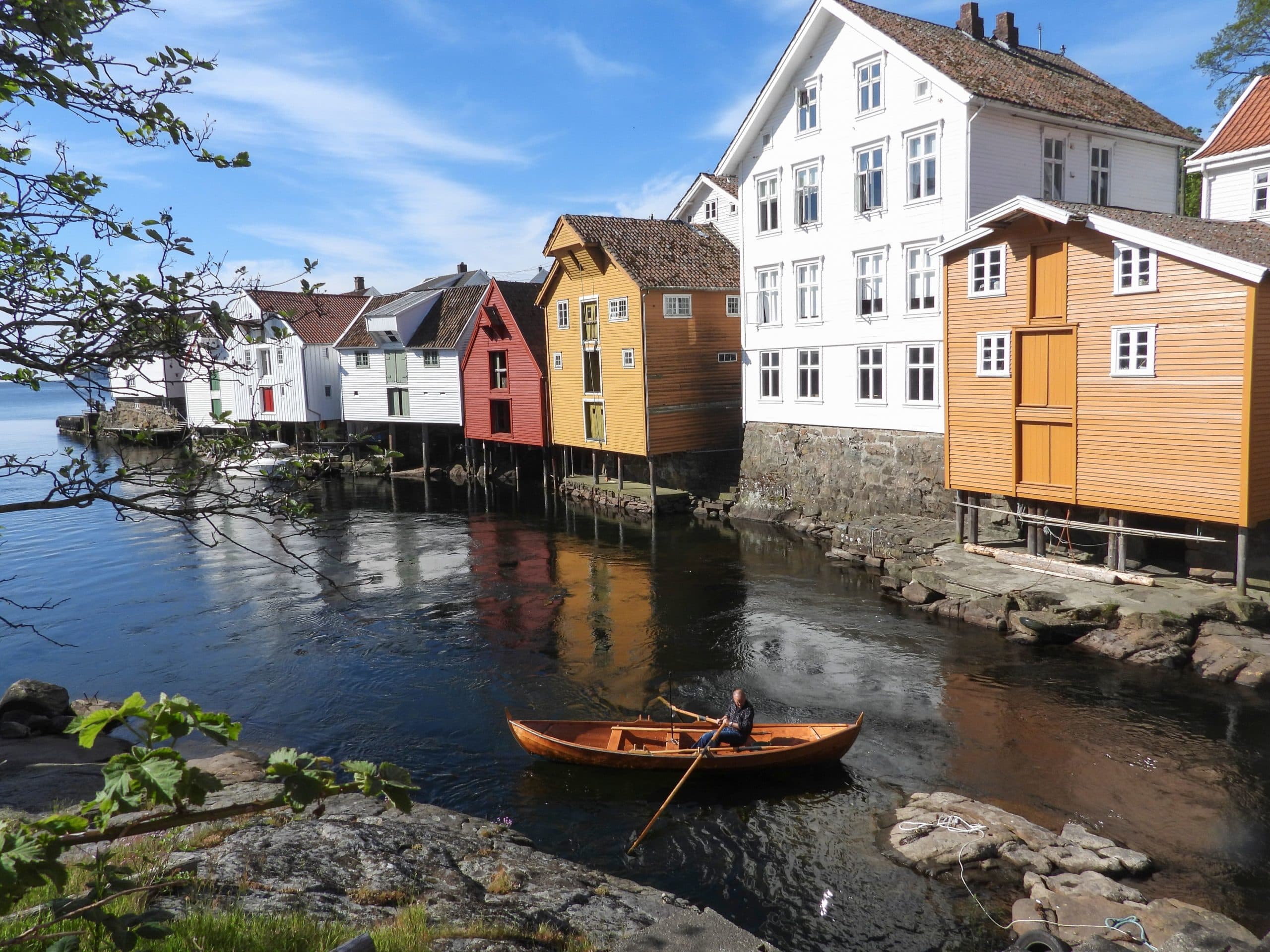Natural attractions
Magma UNESCO Global Geopark
Embark on an inspiring voyage of exploration through the one-of-a-kind lunar terrain found within the Magma UNESCO Global Geopark. This park holds the prestigious UNESCO recognition, inviting you to join us on an adventure like no other.
Magma Geopark stretches across five municipalities on the wild south-west coast. Join us on a journey of discovery in the unique lunar landscape recognised by UNESCO. The landscape here was shaped by ice and is thus full of contrasts: everything from idyllic archipelagos to steep mountains with exciting formations that make you marvel at the powerful forces of nature.
What is a UNESCO Geopark?
A UNESCO Geopark is an area that has an outstanding geological heritage of global significance. Through a unique combination of conservation, sustainable development and community participation, geoparks have become increasingly popular. There are 195 UNESCO Geoparks around the world, and four of these parks are located in Norway.
What is Magma UNESCO Global Geopark?
In Magma Geopark, you enter an area that was once over 20 kilometres below the earth's surface and covered by a mountain range the size of the Himalayas. Here, the rocks surrounding the molten magma were more than ten times as hot as boiling water. At this high temperature, and under great pressure, the magma began to cool and crystallise, forming magmatic, large crystals. One example is anorthosite, the same rock found on the surface of the moon.
Landscapes shaped by 200 ice ages over the course of history
For over 1 billion years, a huge mountain range covered the Magma Geopark area. This mountain landscape was gradually altered by periods of both heat and cold, and eventually, erosion led to the landscape we see today. Some of these cold periods were so cold that they are called ice ages, and during these ice ages, the whole of Norway was covered by huge glaciers. There have been about 200 such ice ages throughout history.
Why the last ice age was important
The last ice age, which ended around 10,000 years ago, was particularly important. The ice shaped the landscape, and when it melted, it led to the formation of many natural sculptures made from different types of rock, some balancing in strange ways, others protruding from the mountains, such as Trollpikken. Here are more places of interest in the geopark.
Explore the stories in Magma Geopark
When you visit Magma Geopark, you can hear fascinating stories about how both human and geological processes have shaped and influenced the nature and landscape we see today. You can book guided tours in the geopark with Magma Geopark for the best anecdotes.
At Magma Geopark you can "walk" on the moon
Because this special type of rock is only found in such large quantities here and on the moon, we can invite you to walk on moon rock! However, the geopark is so much more than just rocks - it's also culture, food, lifestyle and above all - people! Find your lunar experience!
Things to do
Selected experiences in Magma

Outdoor activities and nature
Trollpikken
Egersund
Trollpikken near Egersund is a phenomenon created by the ice during the last ice age. You too can explore the hike to the peculiar Trollpikken in Magma UNESCO Global Geopark.

Culture
Eigerøy lighthouse
Egersund
Established in 1853-54, it has one of Europe's most powerful lights. The lighthouse was built to ensure safety of the shipping traffic along the coast. It was the first cast-iron tower to be built in Norway. Therefore, it was unsure whether it was heavy enough to resist the strong wind that occurs in this area, so 70 000 stones were used to line the tower from the inside. The lighthouse is 32,9 m tall and there are 134 steps to the top of the tower. To get to the lighthouse, follow Fv 502 from Egersund, turn right after Eigerøy Bridge, signposted from Segleim. From the parking lot, follow a 2 km footpath up to the lighthouse. There are 7 geo stops along the trail where you can learn more about anorthosite. The old lighthouse keeper's house is restored and is an open cafe on Sundays, during the summer season. Eigerøy bird-watching station was established by the lighthouse in 1991. It was initiated by Norwegian Association for Ornitology, that uses the hobby house by the lighthouse for this purpose. The station registers bird activity in Midbrødøya all year round. Dogs are not allowed in the period 15 March - 15 October.

Outdoor activities and nature
Bjerkreimselva
Magma UNESCO Global Geopark
Bjerkreimselva is one of Rogaland's longest rivers. The river is a popular area for salmon fishing, and every year more than 7,000 salmon are fished here.

Sightseeing
Boat trip at the Ørsdalsvatnet lake
Magma UNESCO Global Geopark
The largest lake in Bjerkreim municipality is this 17-kilometre-long lake; Ørsdalsvatnet. The lake and surrounding nature can best be experienced by going on a boat trip with M/K Ørsdølen on Sundays in summer.

Outdoor activities and nature
Gursli mines and Hattesteinan
Magma UNESCO Global Geopark
The mining road to the Gursli mines must have been a major struggle to the workers who were transporting ore during World War I. Considering the technical aids they had at the time, the word "exhaustion" comes to mind. Today it is a nice hike around Gullvann lake and towards the old mining site.

Culture
The UN park
Magma UNESCO Global Geopark
The park is to commemorate fallen soldiers from Rogaland that have been in service for the UN.The monument that was erected as a memorial has a great view of Svelavatnet. Located just by the E39, close to Vikeså Veiservice.

Outdoor activities and nature
Svartaknuten
Magma UNESCO Global Geopark
It takes an hour from Storrsheia and up to the top. Hint: bring binoculars. Fantastic views from the top!


Outdoor activities and nature
Gapahuk Storafjell
Magma UNESCO Global Geopark
Vikeså's hiking destination in the town centre. "Gapahuk Storafjellet" is not actually a lean-to shelter, but a cabin open to everyone. Built on the initiative of local enthusiasts, on a peak at an altitude of 500 meters in the middle of Vikeså centre.

Outdoor activities and nature
Bjerkreimselva
Magma UNESCO Global Geopark
Bjerkreimselva is one of Rogaland's longest rivers. The river is a popular area for salmon fishing, and every year more than 7,000 salmon are fished here.

Culture
Uadalen Ancient Monument Area
Magma UNESCO Global Geopark
Farm buildings from the older and younger Iron Age (200–900 AD). Parking by E39. Marked path through the forest and over to the other side of the water. Clear remains of two uses with a total of six houses, built with wooden walls within outer walls of stone. One of the country's largest farm buildings from the Iron Age. About. 160 acres of common infield. Clearing piles and burial mounds.
How to get here
How do you travel to Stavanger and the surrounding region? It doesn't matter how you get here, as long as you get here. We are not that far away, whether you’re travelling by plane, bus, ferry, car or train.
Getting to and around the Stavanger regionSleep well in Magma Geopark!

Accommodation
Sogndalstrand Kulturhotell
Sogndalstrand
Sogndalstrand was originally an old rest stop from the sailing ship era. In this idyllic environment, you will find Sogndalstrand Kulturhotell in a newly restored wooden suit from the 19th century. Here, travellers are received with warmth and great hospitality.

Accommodation
Eigerøy lighthouse
Egersund
Sleep at the Eigerøy lighthouse - one of Europe's most robust and Norway's first cast iron lighthouses.

Accommodation
Grand Hotell Egersund
Egersund
Grand Hotell Egersund is located in one of Norway's best-preserved wooden buildings - a short distance to shops, attractions, activities and trains.
World heritage attractions


Gudvangen
Gudvangen is a small fjord village in the heart of the beautiful Nærøyfjord and is surrounded by high mighty mountains and a beautiful fjord landscape. Directly from Gudvangen you look out over the fjord which has been named by several foreign media "The world's most beautiful and spectacular fjord, UNESCO Nærøyfjorden".





